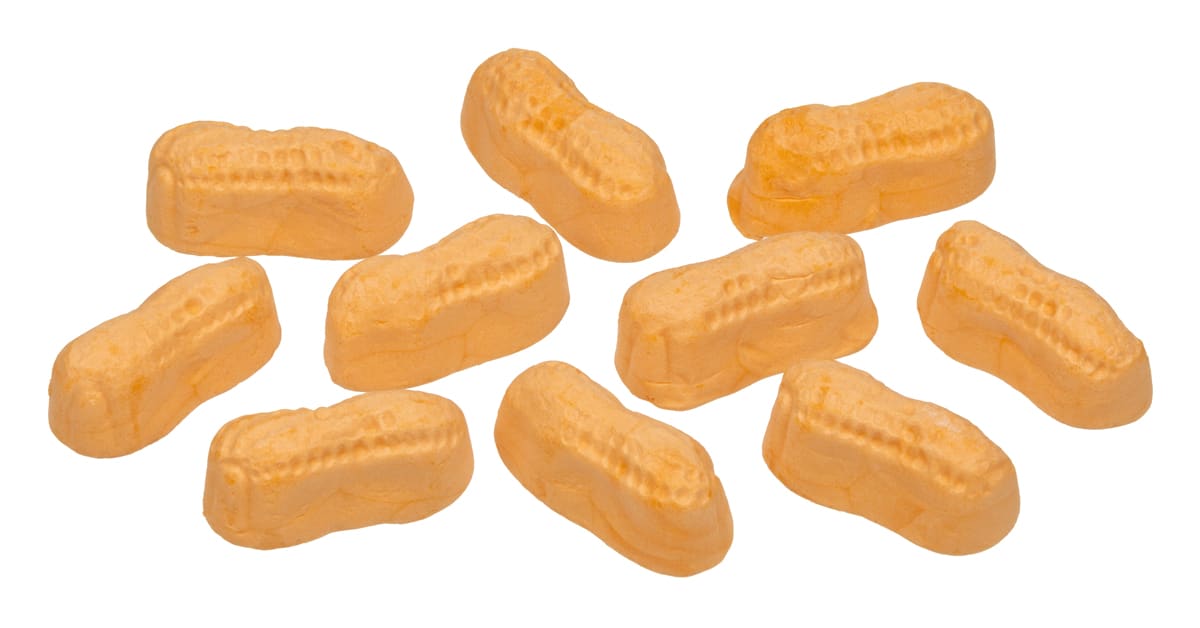Circus Peanuts – Penny Candy That Changed History
Circus Peanuts, which resembles a peanut, is orange in color, tastes like a banana with two doses of sugar, and is one of the most divisive sweets out there. According to the sources, in the 1800s, Circus Peanuts was created for the touring circus. It is believed that those marshmallow-like candy pieces were inspired by the circus theme and were typically added to Lucky Charms cereal.
Honestly, no one knows why they are shaped like peanuts, but if you enjoy Circus Peanuts or you know someone who does, then you have to read this article.
Please leave a review or any memories of this snack in the comments at the bottom of this page. Thank you!
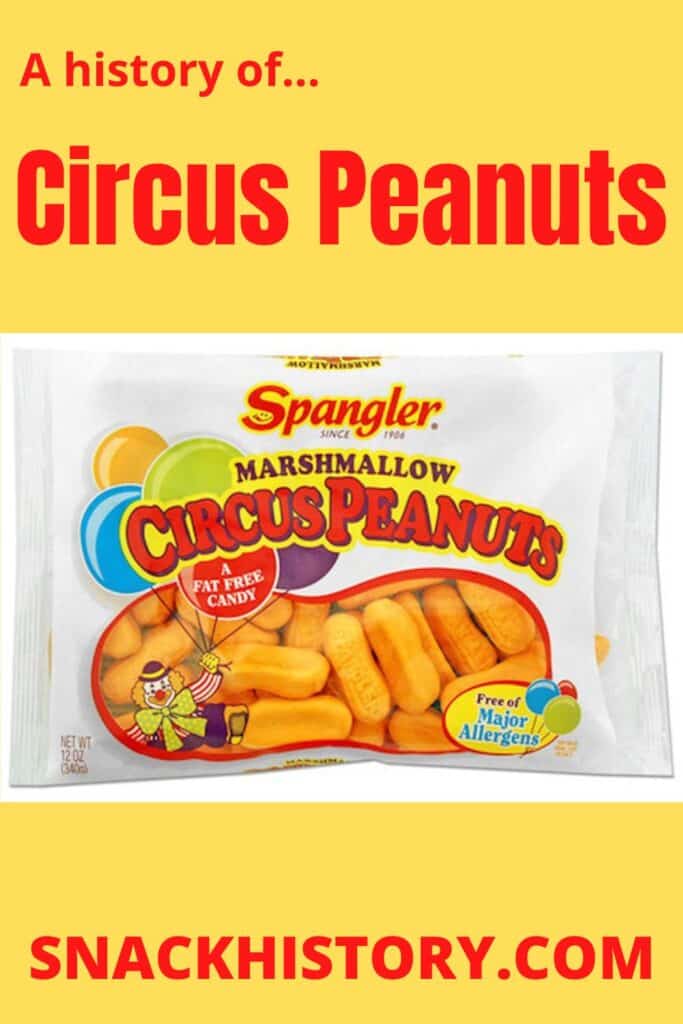
History
Circus Peanuts are a peanut-shaped marshmallow treat popular in America. They were among a wide range of unwrapped “penny candy” that was offered in retail establishments like five-and-dime stores throughout the 19th century. The sweet, marshmallow-like candy has been made in northwest Ohio since the 1930s by Spangler Candy, the confectionary famous for Dum-Dums.
Back in the day, individually wrapped hard or chewy sweets were offered at 5- and 10-cent variety shops, soda fountains, and candy shops.
The most common type of mass-produced Circus Peanuts is orange in color and artificially flavored to taste like bananas. These are often created from ingredients including sugar, corn syrup, gelatin, pectin, soy protein, food coloring, and synthetic flavors. Due to a shortage of packaging that could keep the candy fresh, confectioners first sold an orange-flavored variety that was only accessible during certain times of the year.
Candy was only available in the spring until the 1940s, but with the development of polyethylene film, it could be marketed and eaten all year. They have been sold by confectioners in a variety of flavors and colors over the years. Even though the goods are nearly identical, Melster Candies, Spangler Candy Company, and Brach’s are the largest makers of Circus Peanuts.
During World War II, when sugar was rationed, the liquid combination was bottled in jars and marketed as a sugar substitute. Since 1941, the Spangler Candy Co. of Bryan, Ohio, has produced 32,000 pounds a day of Circus Peanuts, some of which was packaged under the Spangler brand and the remainder of which were sold in bulk for repackaging.
But why are they called “Circus” peanuts? According to one theory, Circus Peanuts first gained popularity in touring circuses, where vendors also sold salted peanuts and other sweets.
Circus Peanuts as Penny Candy
By definition, “penny candy” currently refers to a wide range of various individually wrapped and marketed candies with a history spanning more than 50 years. Although most of the candy was sold in bulk by the pound rather than the piece, the “penny” in the name refers to the fact that originally the cost was about a cent per piece.
With the debut of the Tootsie Roll in 1896, penny candies were first marketed in individually wrapped packages. The Tootsie Roll was quickly followed by the Sweetheart, which was created by the Civil War-era candy manufacturer Necco Wafers.
Hershey’s Kisses’ introduction to the penny candy market in 1907 marked the entry of chocolate candies. Along the way, other well-liked penny sweets were introduced, such as Bottle Caps, Candy Corn, Bubble Gum, Circus Peanuts, Jawbreakers, and licorice.
Even though penny candy had been available for years in local markets, pharmacies, and specialty ice cream and candy shops, the F.W. Woolworth Company’s first five and dime stores were largely responsible for its rise to fame. As much as its lunch counters, Woolworth’s penny candy aisle became associated with the store’s brand.
Much of the appeal of penny sweets were lost in the 1980s when the Woolworth Company shut down its U.S. locations. Although supermarket corporations still offer candy in bulk and there are specialty penny candy shops throughout the United States, the term “penny candy,” as it was once known, has been consigned to nostalgia and the past.
Circus Peanuts and Lucky Charms
Circus Peanuts’ influence on the development of Lucky Charms is the reason for the celebration. A General Mills team was given six months to develop a children’s cereal. They sat down with a variety of foods at their disposal, including Cheerios and Wheaties, as well as a large number of sweets from the shop shelves.
When a General Mills employee cut chunks of Circus Peanuts into a bowl of Cheerios in 1964, it inspired the development of Lucky Charms. Everyone adored the concept when they mixed stale Circus Peanuts pieces into sugared Cheerios. There was the birth of an American cartoon mascot too. So, if you have any leftover Circus Peanuts, chop them up and mix them into your morning cereal.
In 1964, John Holahan, a product developer, officially invented Lucky Charms. A marketing firm hired by General Mills and Company advised basing the promotion of the new cereal on charm bracelets.
As a result, Lucky Charms charms were created. Lucky Charms was eventually the first cereal to use marshmallows in its formula. Due to their small size, these particles are referred to as “marshmallow bits” or “orbits.” Edward S. Olney and Howard S. Thurmon created Kraftco Corporation, which is currently the owner of the patent grant.
Marshmallows in the forms of pink hearts, yellow moons, orange stars, and green clovers may be found in the cereal Lucky Charms’ initial boxes. Well, as already mentioned above, this is inspired by Circus Peanuts. Beginning with the addition of blue diamonds in 1975, the lineup has occasionally changed to include other items such as purple horseshoes in 1983, red balloons, green trees, rainbows, blue moons, leprechaun hats, and many more.
Over the years, General Mills added icing, chocolate, and other delectable additions to the cereal to liven it up. But the marshmallow component, which was inspired by Circus Peanuts, has always been the box’s shining star.
What Circus Peanuts Taste Like?
It should come as no surprise that Circus Peanuts are nothing like the peanuts you eat while watching a baseball game. No flavor, color, scent, or texture is comparable. The fake banana flavor found in traditional Circus Peanuts may strike you as weird. The flavor of this sweet may have been chosen by an unanticipated banana oil occurrence. Whether or not such an assertion is accurate, many people still find the taste selection odd.
Rainbow Circus Peanuts are an alternative to the more common kind. The identical peanut-shaped marshmallows in this assortment of pastel colors come in four distinct hues: pink, yellow, white, and orange. Naturally, the orange peanuts have their typical banana taste. However, the pink peanuts have a cherry flavor, the yellow peanuts have a lemon flavor, and the white peanuts have vanilla undertones.
Circus peanuts are considerably different from the typical fluffy white marshmallows used to make s’mores in terms of flavor, texture, and appearance. They have a wet texture while they’re fresh but rapidly go bad if left out since they contain a lot of corn syrup. They also have a somewhat gritty feel as opposed to the marshmallows’ smooth, pillowy, gummy texture.
How Circus Peanuts Are Made
Production is a lengthy and somewhat intricate operation that takes more than a day to complete. First, a jar is filled with a combination of sugar and water. To give the final product a soft feel, pectin, a soluble fiber included in fruits and vegetables, is added. The mixture is pumped into a large cooling tank where the gelatin, color, taste, and powdered sugar are added once the corn syrup has been mixed into the mixture.
The mixture is quickly whirled around in an aerator to give Circus Peanuts their fluffy texture. The mixture is poured into a starch-coated tray that has individual molds in the shape of peanut pods.
The candies are given an “air wash” to eliminate any extra starch after fully drying for 24 hours. The completed item is subsequently transported via metal detectors and packed.
Logo
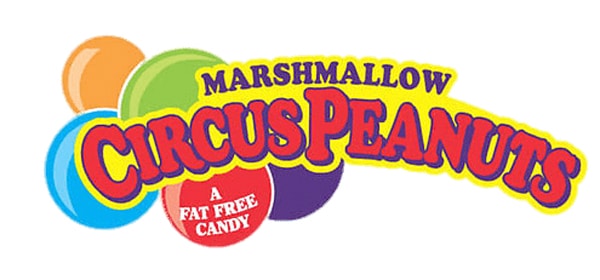
Ingredients
- Sugar
- Corn Syrup
- Gelatin
- Pectin
- Artificial Flavor
- Color Added (Includes Yellow 6, Yellow 5, Red 40).
Nutritional Value
Circus peanuts are not extremely nutrient-dense. After all, they are sweets. Five peanuts count as one serving and have 147 calories. Fat, trans fat, salt, or protein may not be found in circus peanuts. Additionally, they include 35 grams of sugar and 38 grams of carbs per serving.
The good news for people who avoid gluten is that Circus Peanuts are gluten-free. Circus Peanuts are fat-free and devoid of the main allergens, such as peanuts, even though they contain a lot of sugar.
Additional businesses that make the product today use the same methods, components, and techniques.
Nutrition
| Serving Size: | 5 pieces (38g) | % Daily Value* |
| Amount Per Serving | ||
| Calories | 150 | |
| Calories from Fat | 0 | |
| Total Fat | 0g | 0% |
| Trans Fat | 0g | |
| Sodium | 0mg | 0% |
| Total Carbohydrates | 38g | 13% |
| Sugars | 35g | |
| Protein | 0g | |
| Iron | 0% |
- Percent Daily Values are based on a 2000-calorie diet.
Pictures
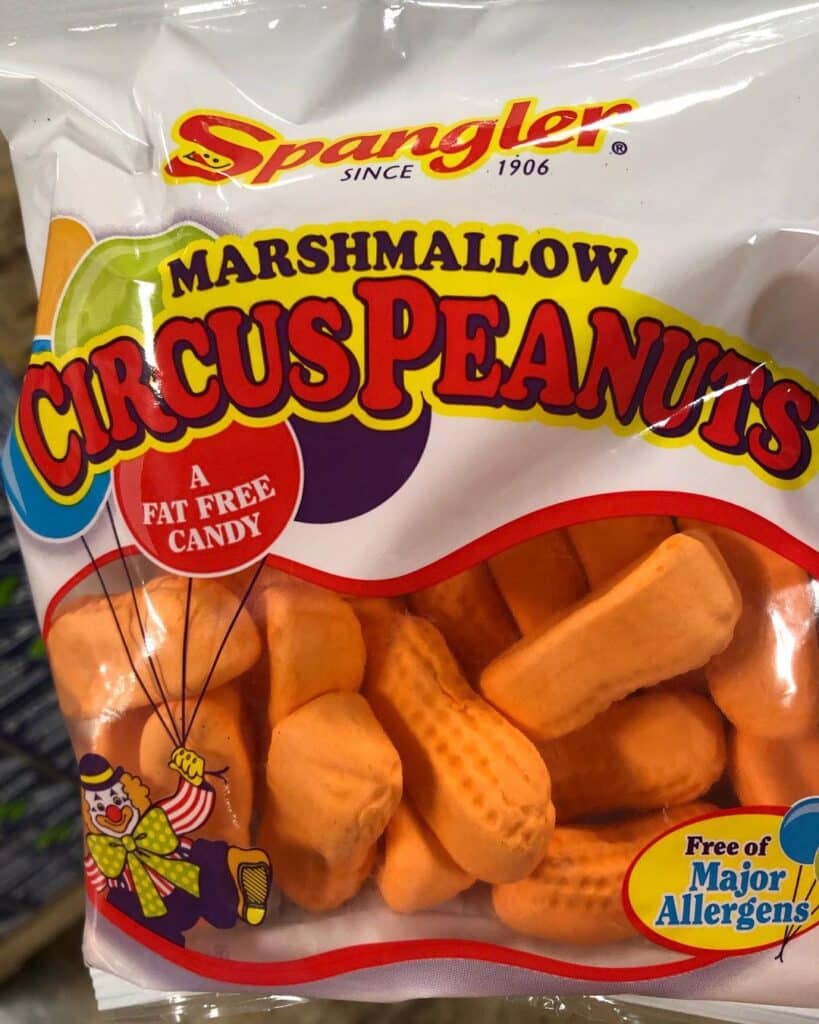
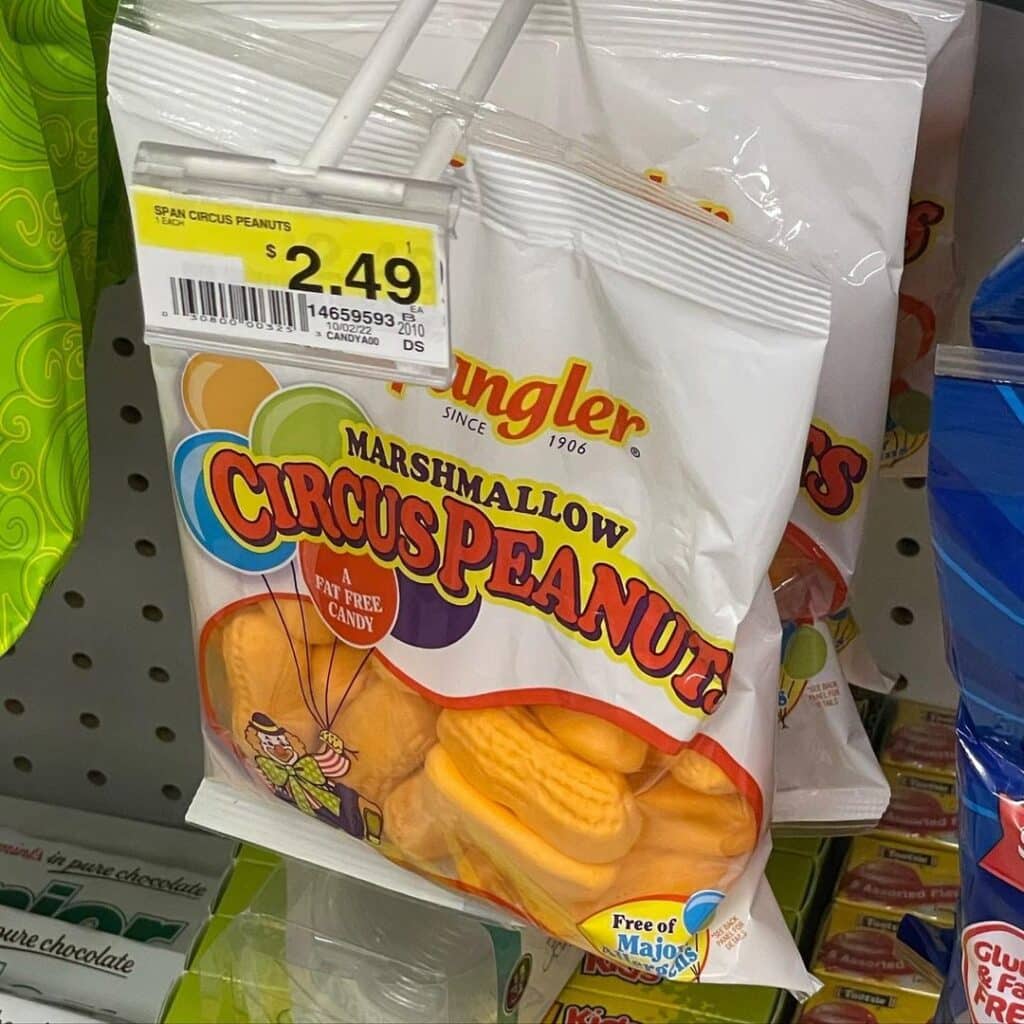
FAQ
What flavor are Circus Peanuts?
Spangler Circus Peanuts are a peanut-shaped marshmallow treat that is banana-flavored.
What are Circus Peanuts?
Circus peanuts are an American peanut-shaped marshmallow candy.
What do Circus Peanuts taste like?
Circus peanuts are not real peanuts. They are a peanut-shaped marshmallow candy with a soft and spongy texture. They are orange in color and come in an artificial banana flavor.
Bottom Line
Above, we explored the history, ingredients, and taste of these controversial snacks — Circus Peanuts. Contrary to their name, circus peanuts don’t even somewhat resemble peanuts in taste. They actually have no trace at all of any kind of nut in them.
The sweet, banana-flavored candy is known to many Americans, especially older generations. However, it is not as well known as it once was during the heyday of the fabled “penny candies.”

Nato is a content writer and researcher with a background in psychology. She’s passionate about writing about the candy industry and exploring the cultural significance of sweets and treats. She believes that the stories behind our favorite snacks can reveal a great deal about our values.
Please leave a review or any memories of this snack in the comments below. Thank you!
Click here for a full A-Z list of Snacks and Candy
